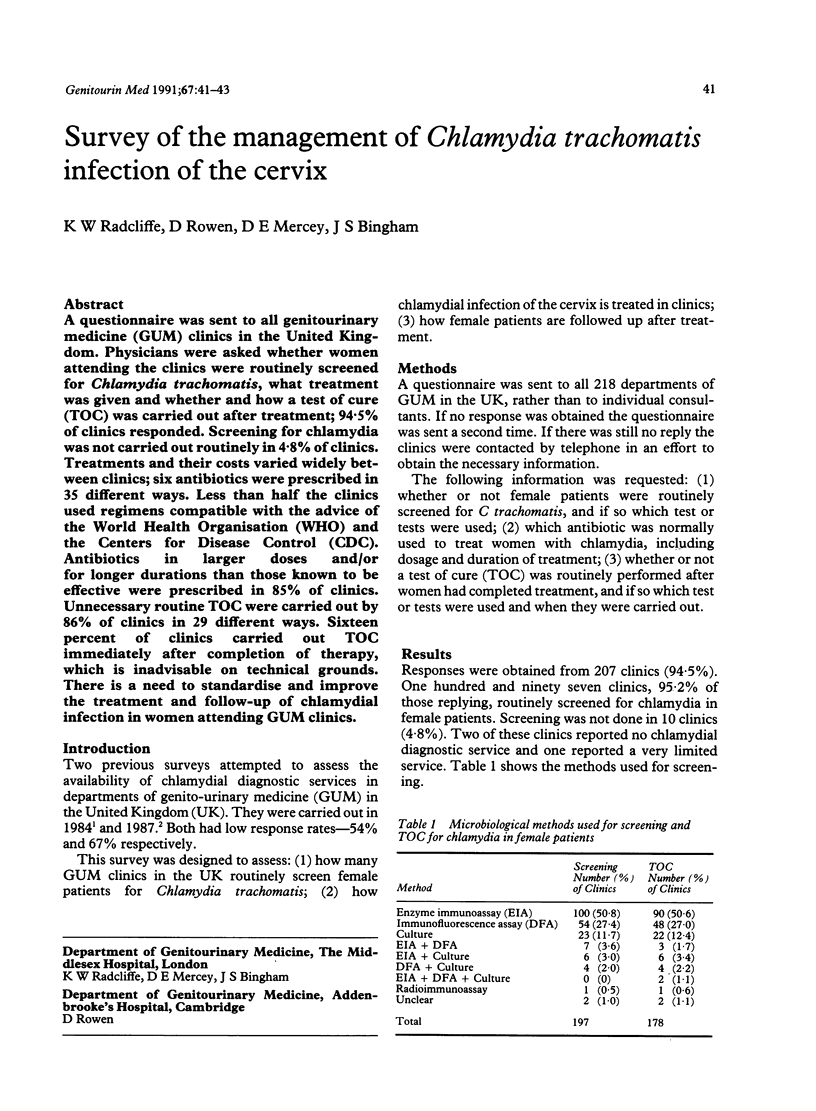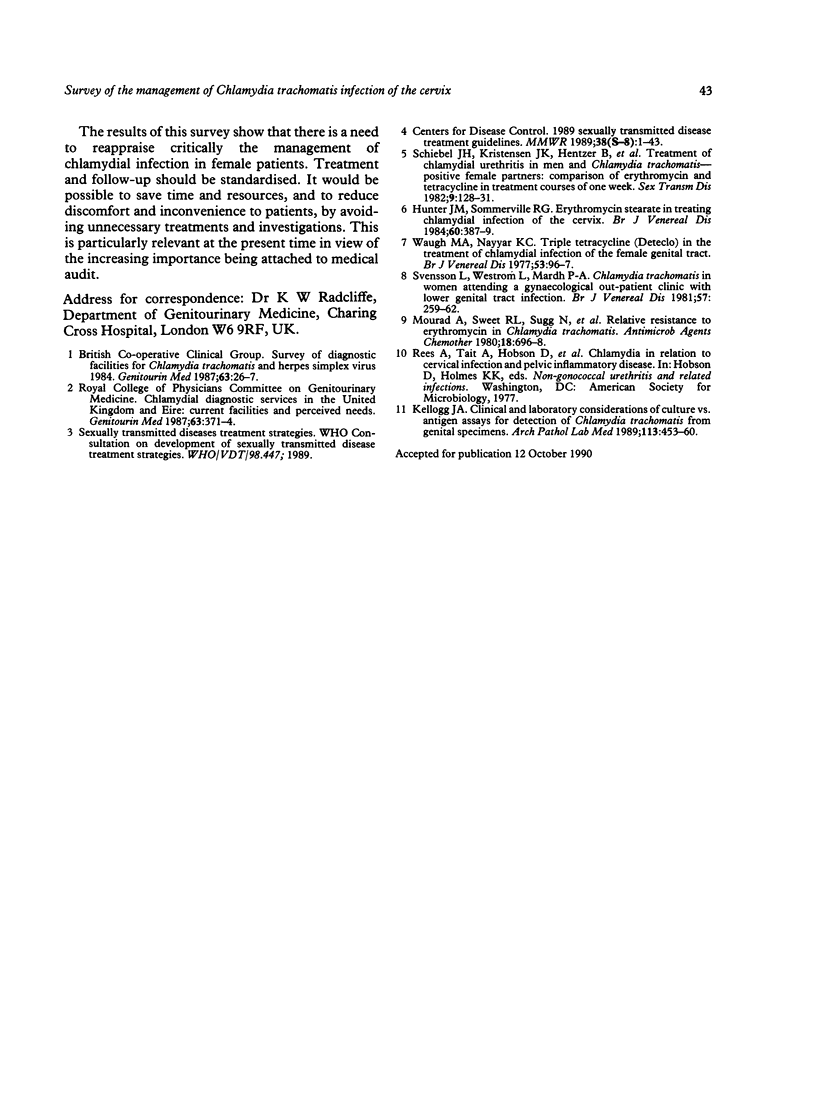Abstract
A questionnaire was sent to all genitourinary medicine (GUM) clinics in the United Kingdom. Physicians were asked whether women attending the clinics were routinely screened for Chlamydia trachomatis, what treatment was given and whether and how a test of cure (TOC) was carried out after treatment; 94.5% of clinics responded. Screening for chlamydia was not carried out routinely in 4.8% of clinics. Treatments and their costs varied widely between clinics; six antibiotics were prescribed in 35 different ways. Less than half the clinics used regimens compatible with the advice of the World Health Organisation (WHO) and the Centers for Disease Control (CDC). Antibiotics in larger doses and/or for longer durations than those known to be effective were prescribed in 85% of clinics. Unnecessary routine TOC were carried out by 86% of clinics in 29 different ways. Sixteen percent of clinics carried out TOC immediately after completion of therapy, which is inadvisable on technical grounds. There is a need to standardise and improve the treatment and follow-up of chlamydial infection in women attending GUM clinics.
Full text
PDF


Selected References
These references are in PubMed. This may not be the complete list of references from this article.
- Hunter J. M., Sommerville R. G. Erythromycin stearate in treating chlamydial infection of the cervix. Br J Vener Dis. 1984 Dec;60(6):387–389. doi: 10.1136/sti.60.6.387. [DOI] [PMC free article] [PubMed] [Google Scholar]
- Kellogg J. A. Clinical and laboratory considerations of culture vs antigen assays for detection of Chlamydia trachomatis from genital specimens. Arch Pathol Lab Med. 1989 May;113(5):453–460. [PubMed] [Google Scholar]
- Mourad A., Sweet R. L., Sugg N., Schachter J. Relative resistance to erythromycin in Chlamydia trachomatis. Antimicrob Agents Chemother. 1980 Nov;18(5):696–698. doi: 10.1128/aac.18.5.696. [DOI] [PMC free article] [PubMed] [Google Scholar]
- Scheibel J. H., Kristensen J. K., Hentzer B., Secher L., Ullman S., Verdich J., Weismann K. Treatment of chlamydial urethritis in men and Chlamydia trachomatis-positive female partners: comparison of erythromycin and tetracycline in treatment courses of one week. Sex Transm Dis. 1982 Jul-Sep;9(3):128–131. doi: 10.1097/00007435-198207000-00005. [DOI] [PubMed] [Google Scholar]
- Svensson L., Weström L., Mårdh P. A. Chlamydia trachomatis in women attending a gynaecological outpatient clinic with lower genital tract infection. Br J Vener Dis. 1981 Aug;57(4):259–262. doi: 10.1136/sti.57.4.259. [DOI] [PMC free article] [PubMed] [Google Scholar]


